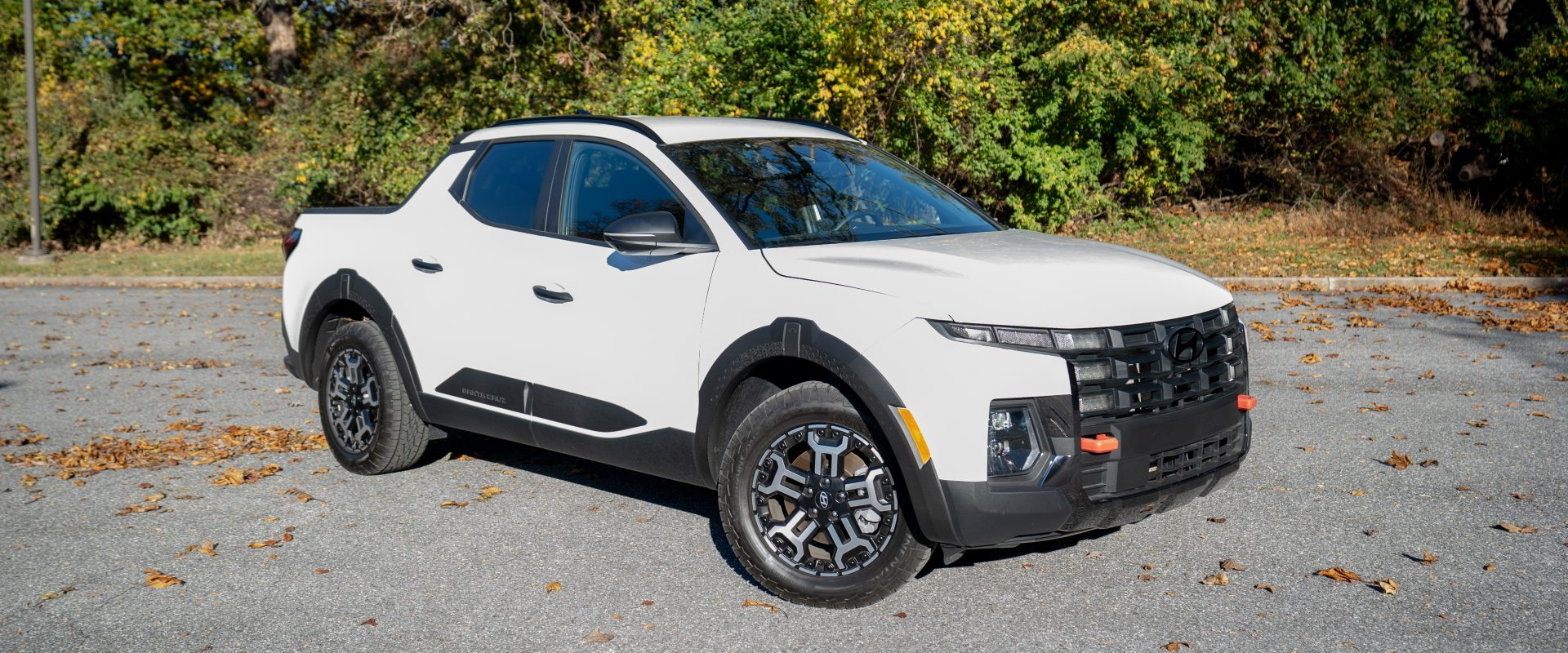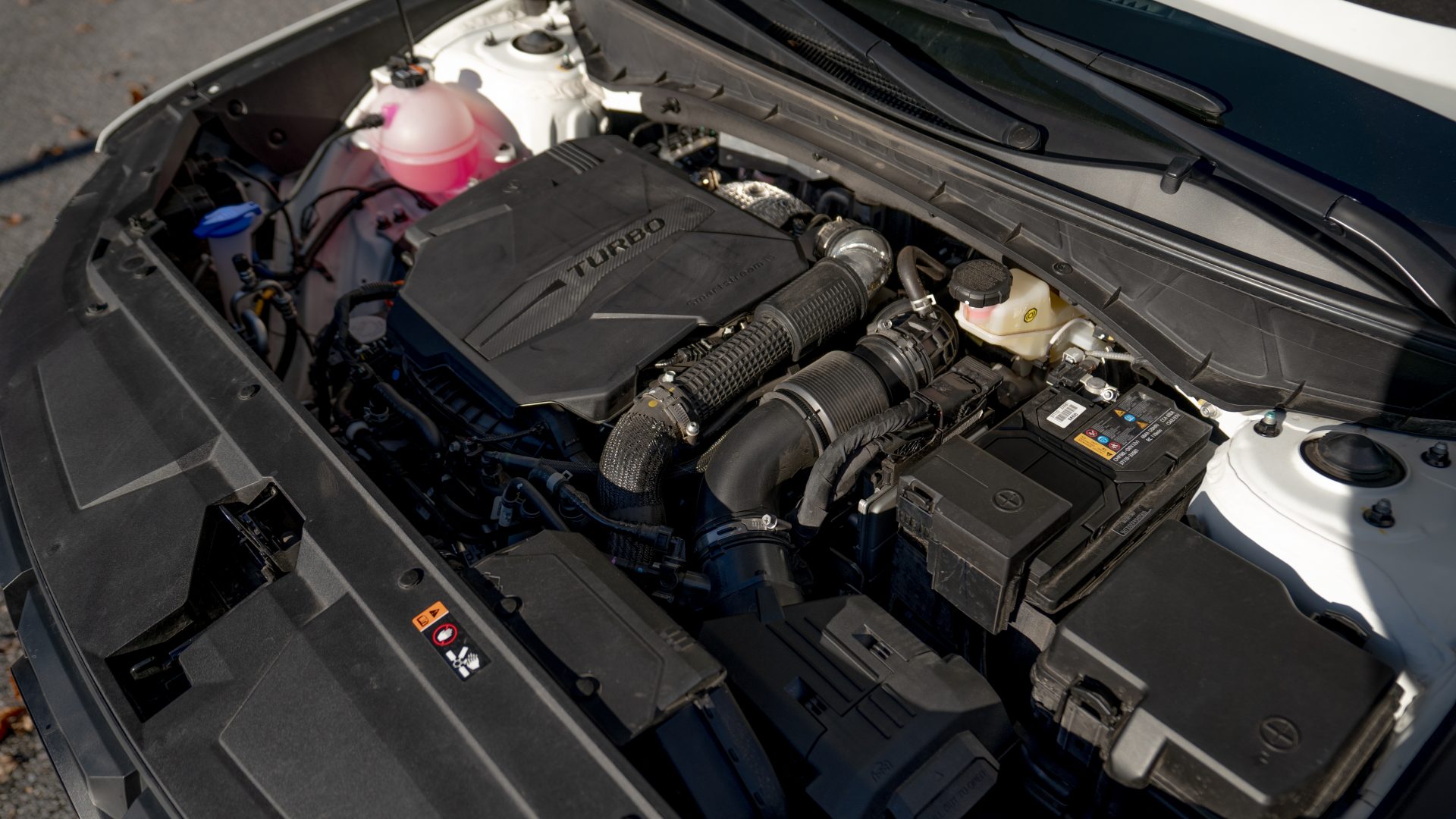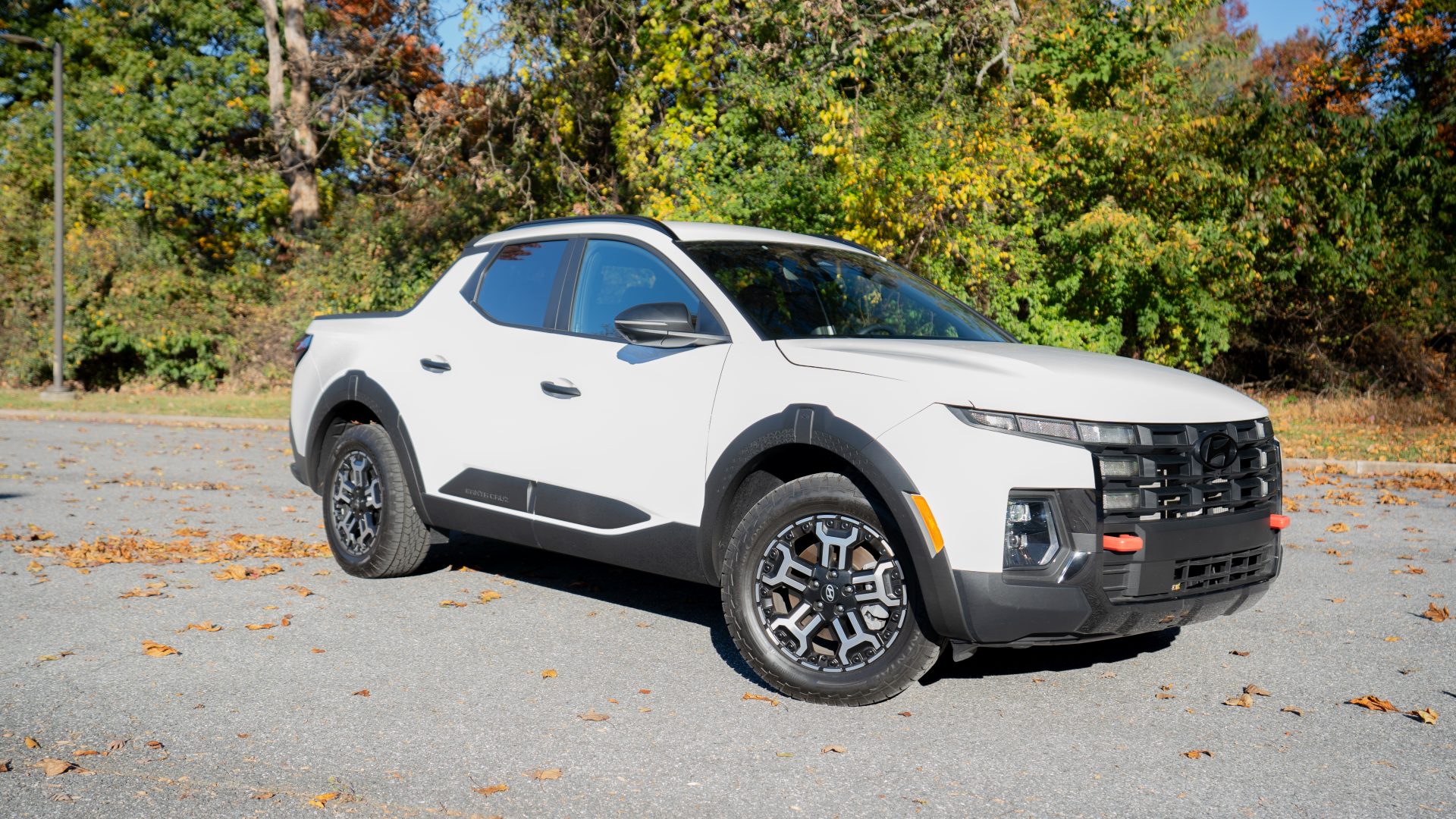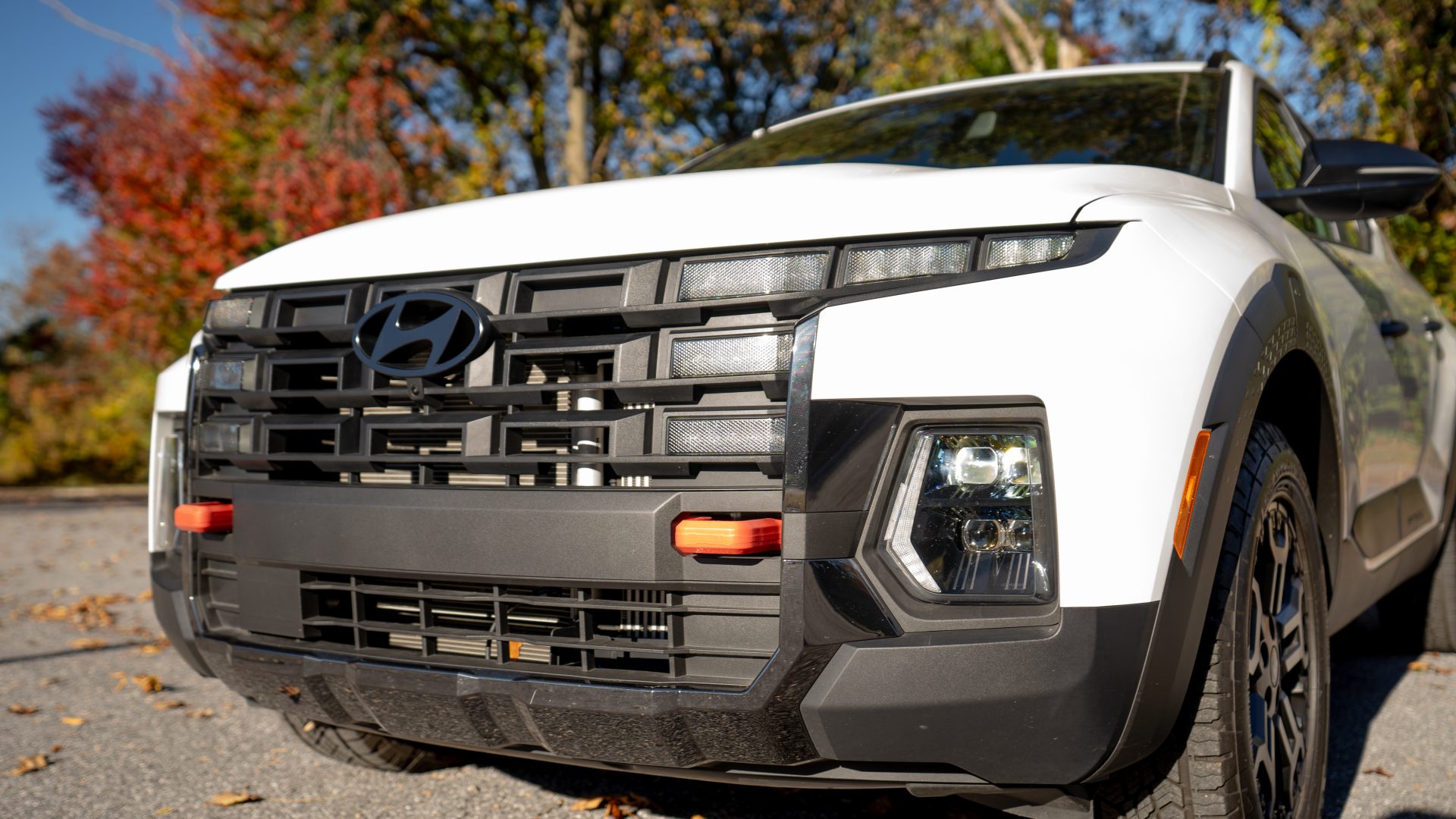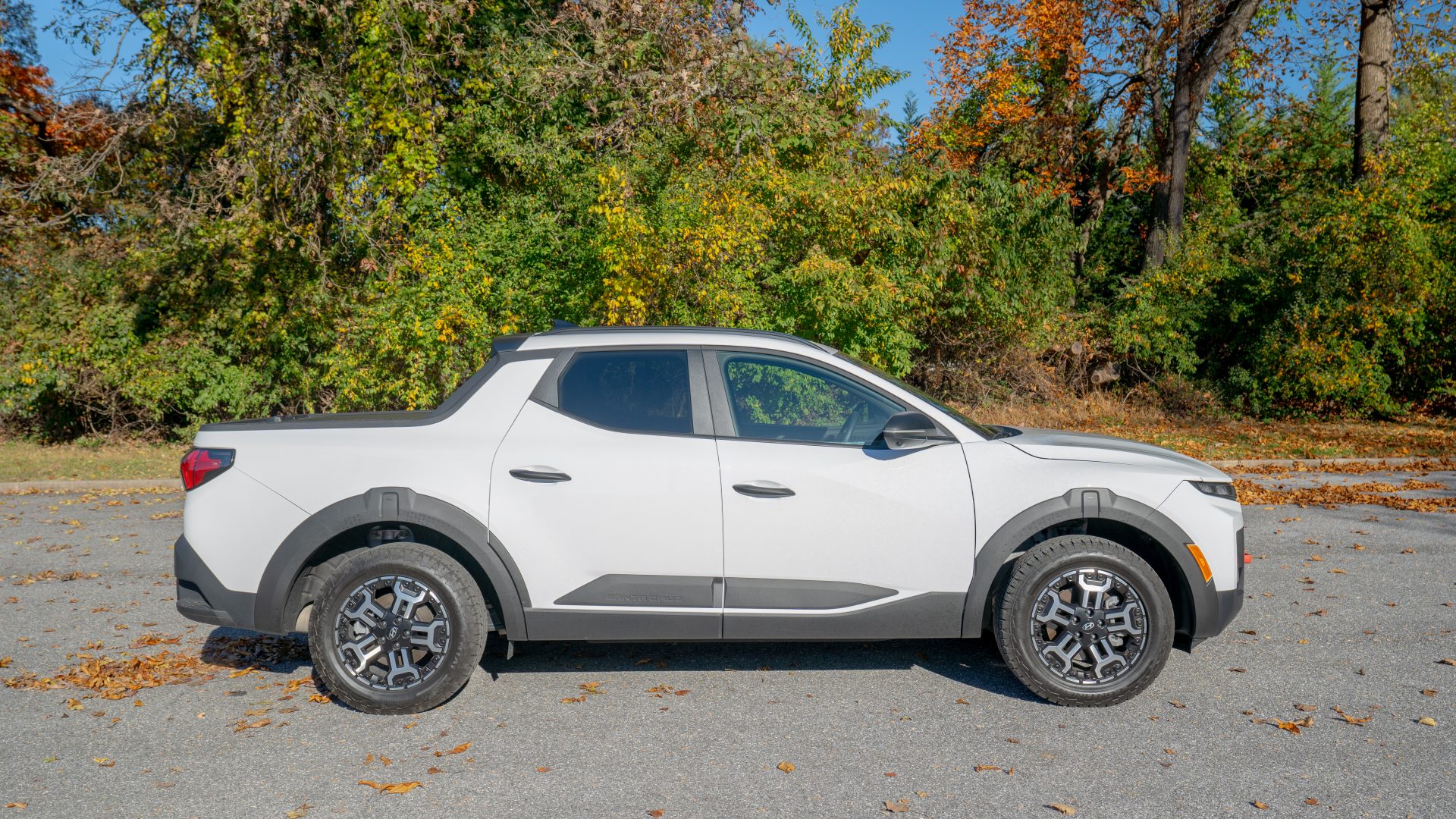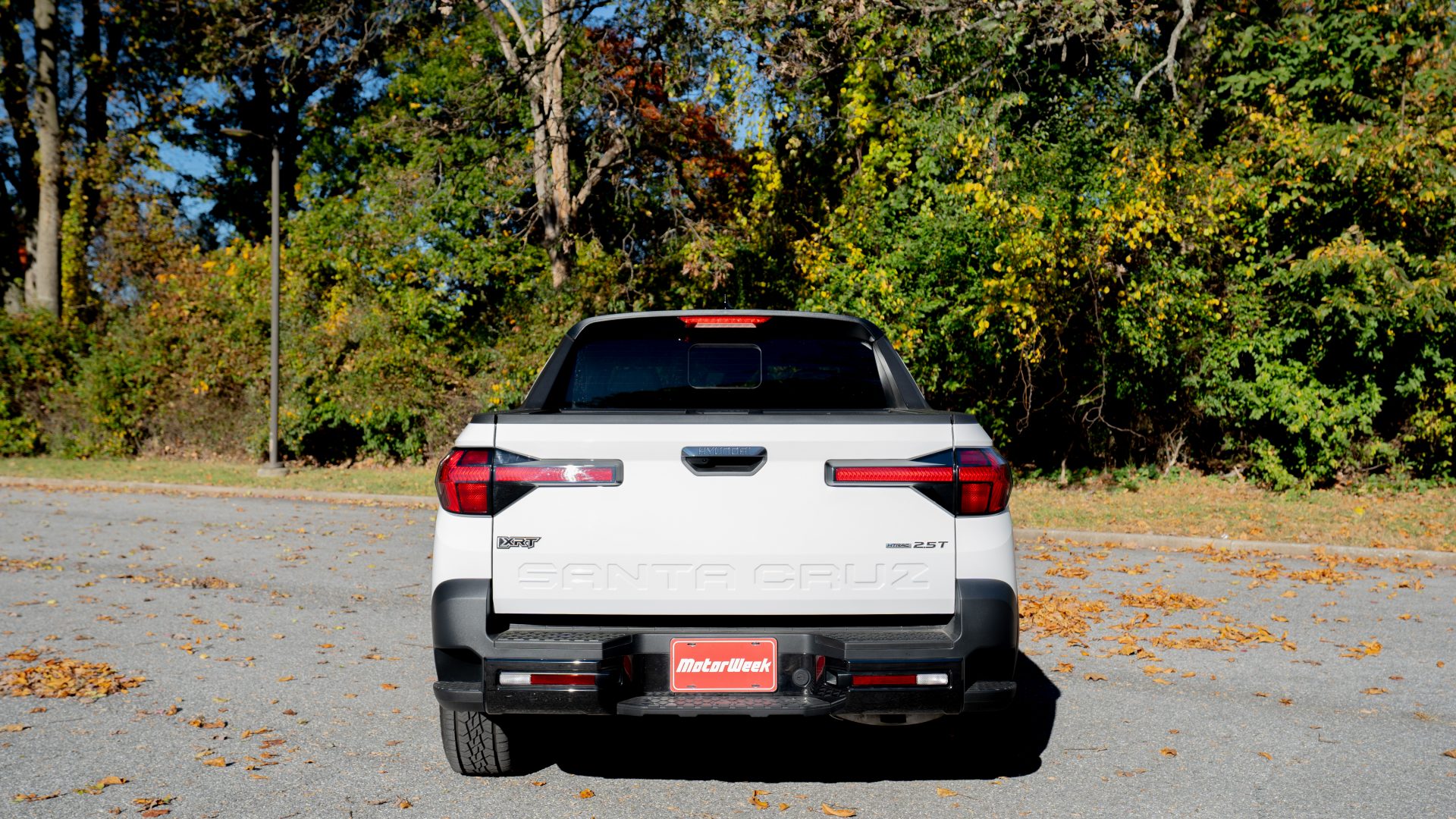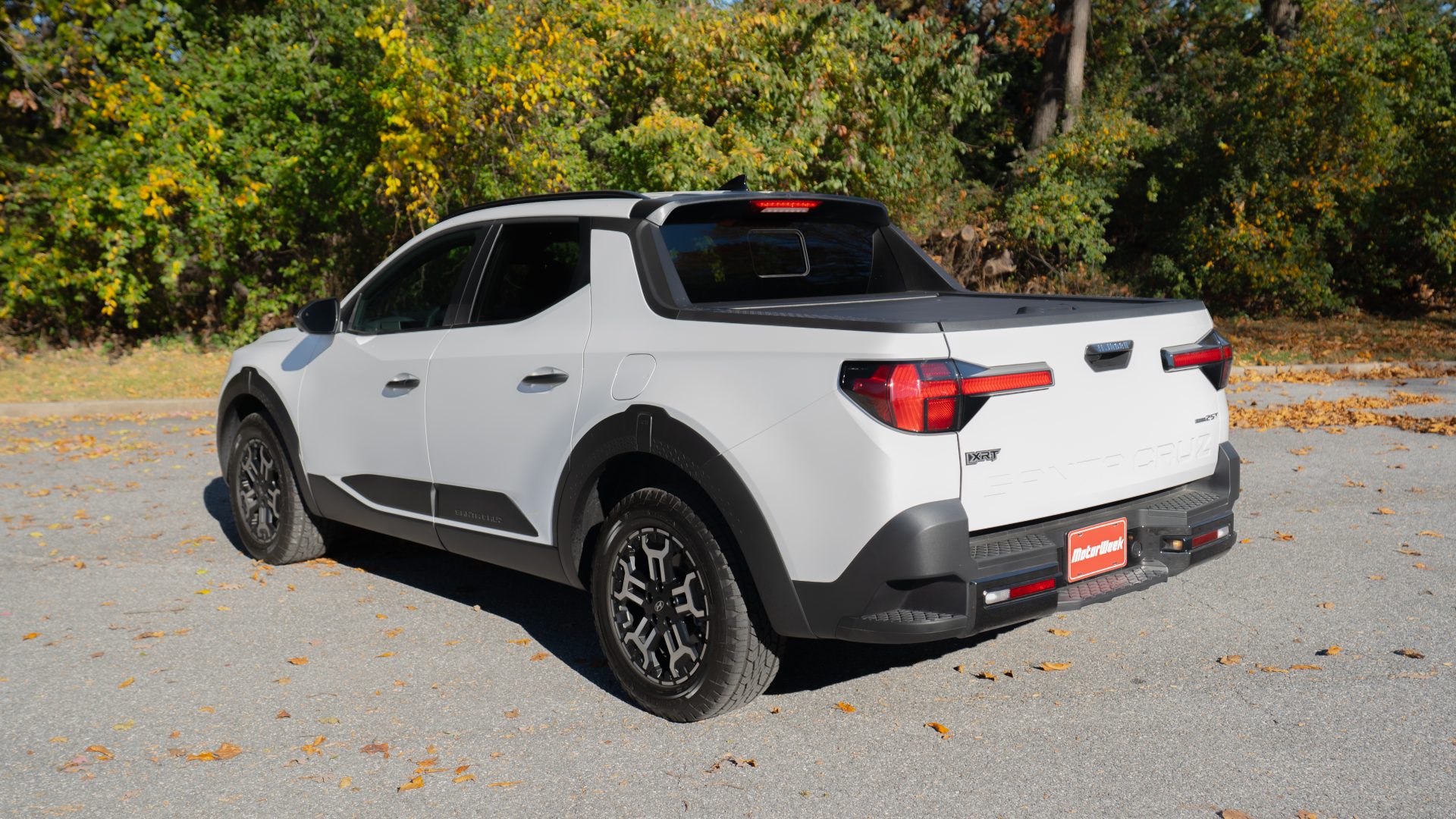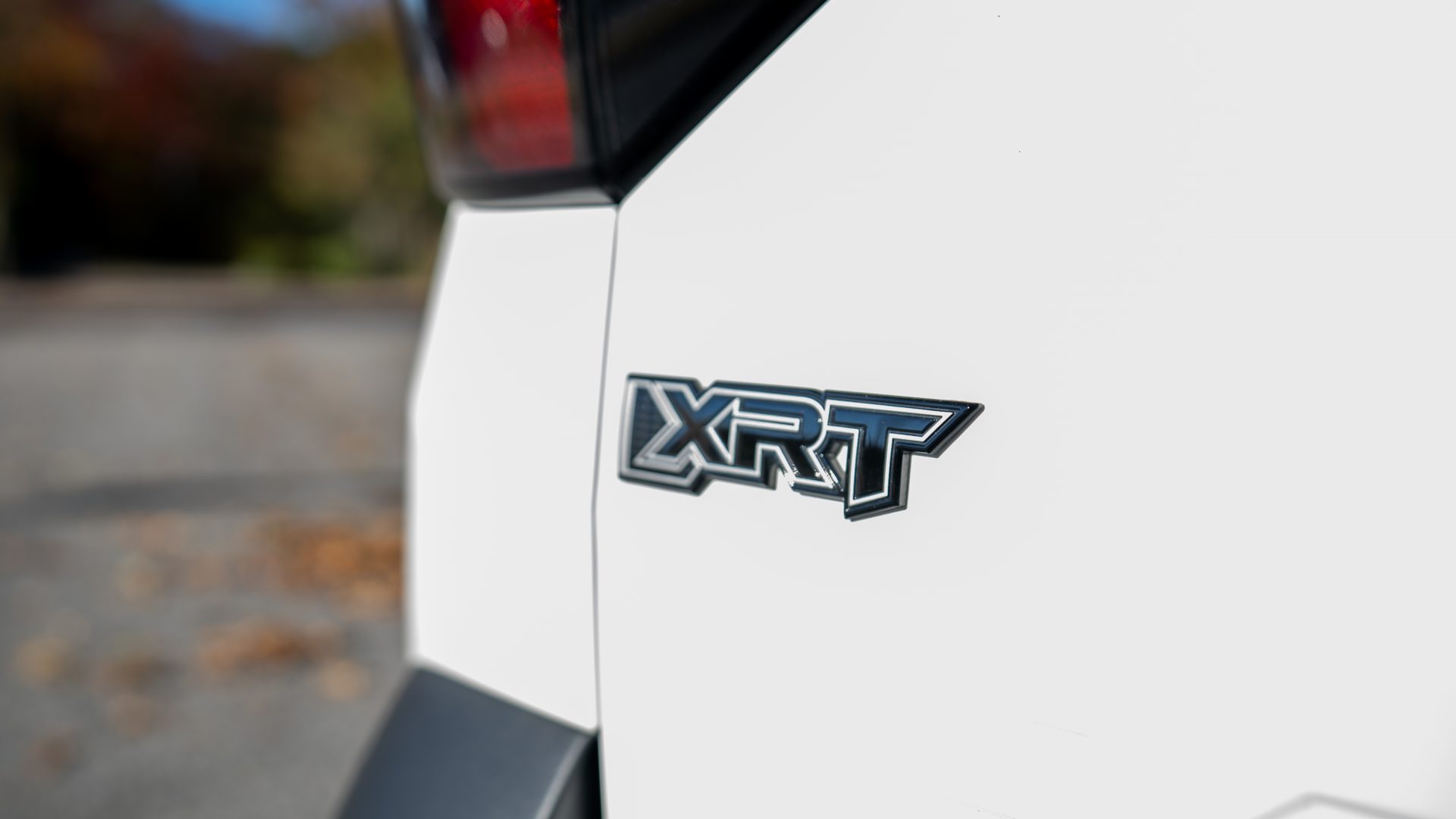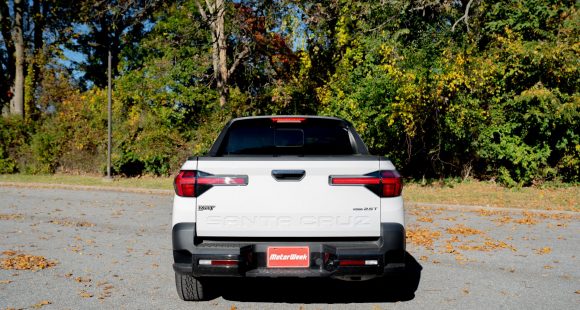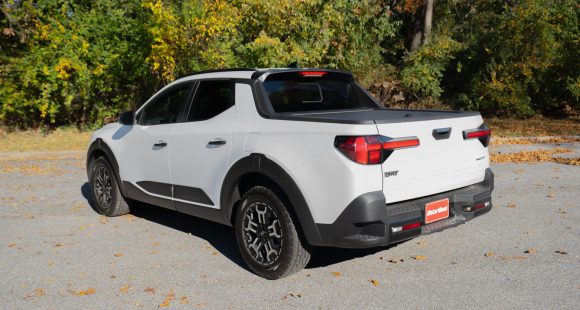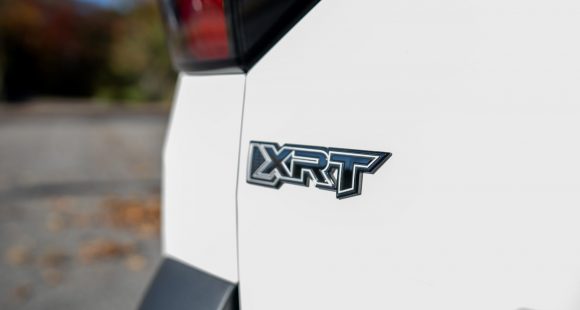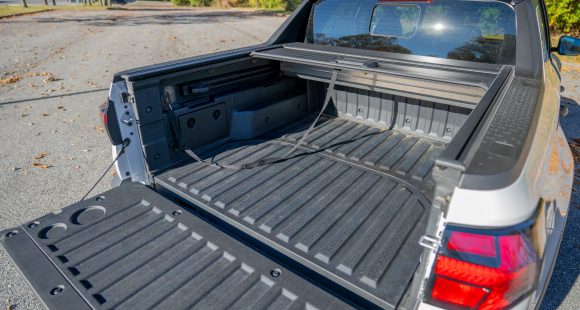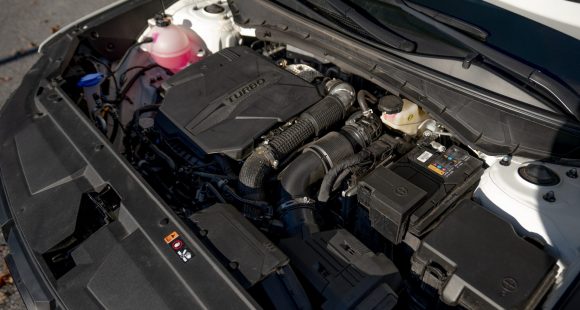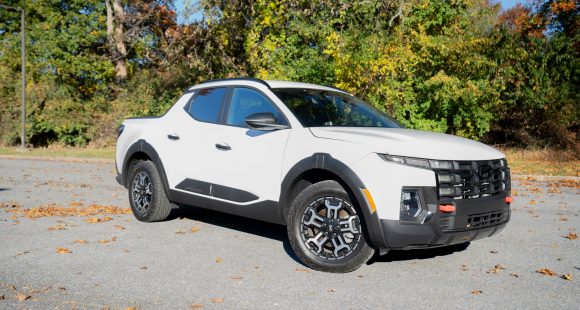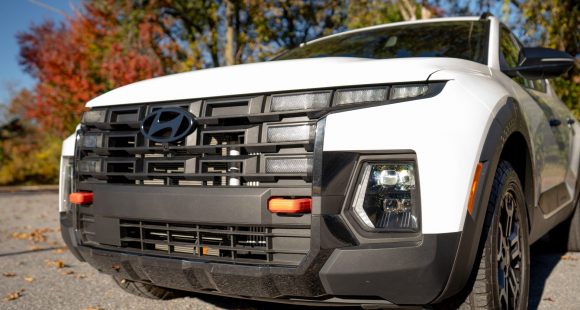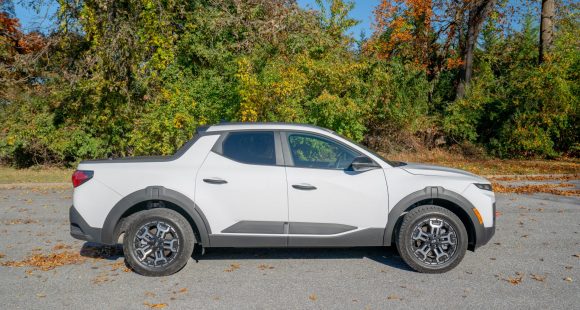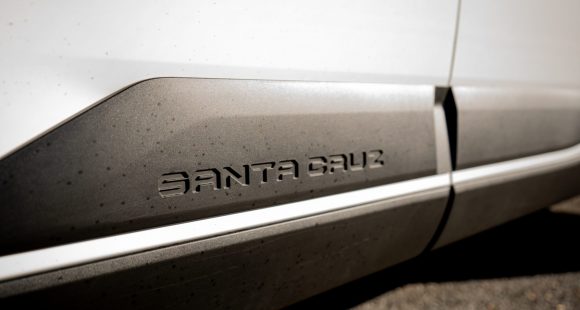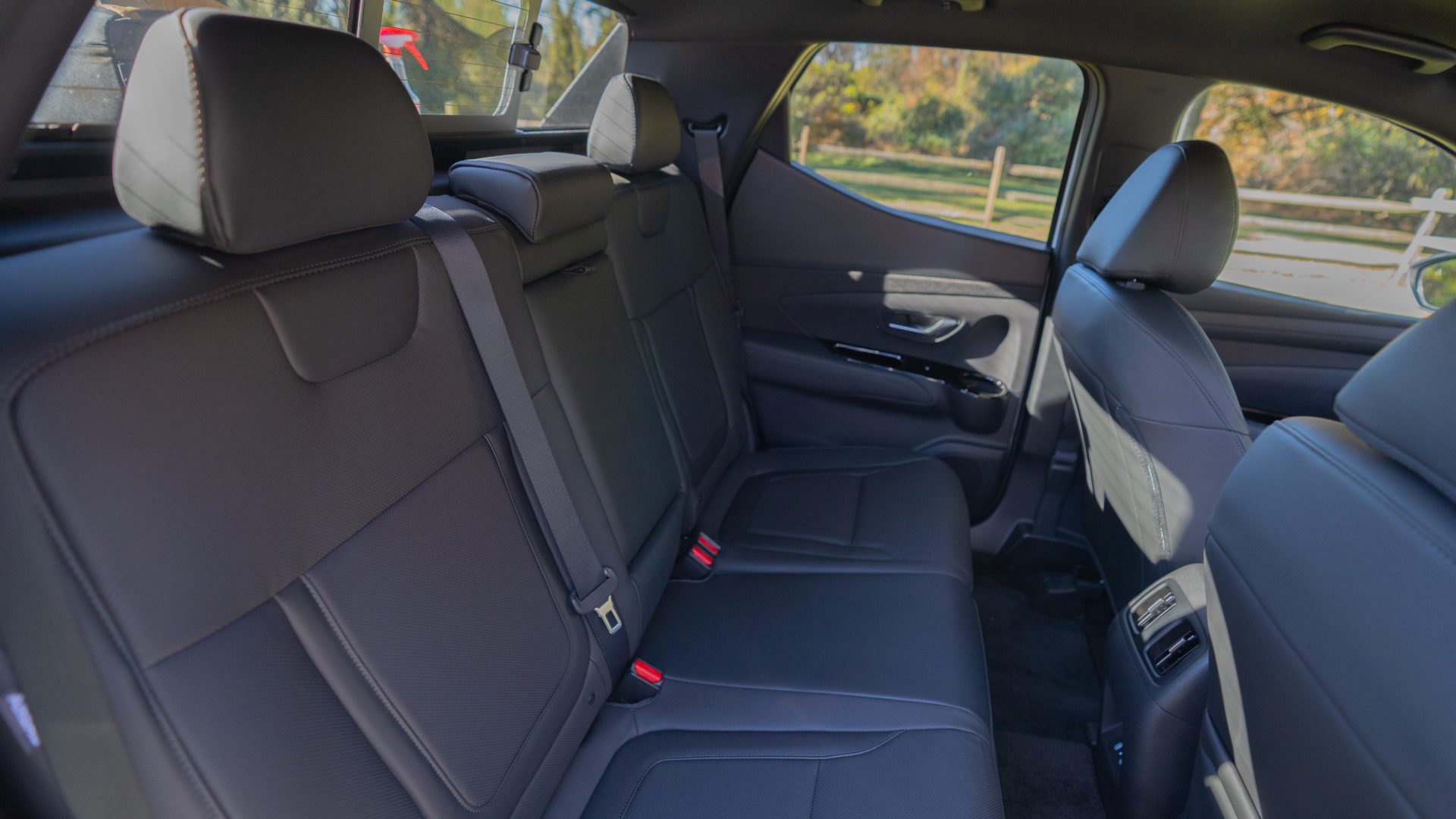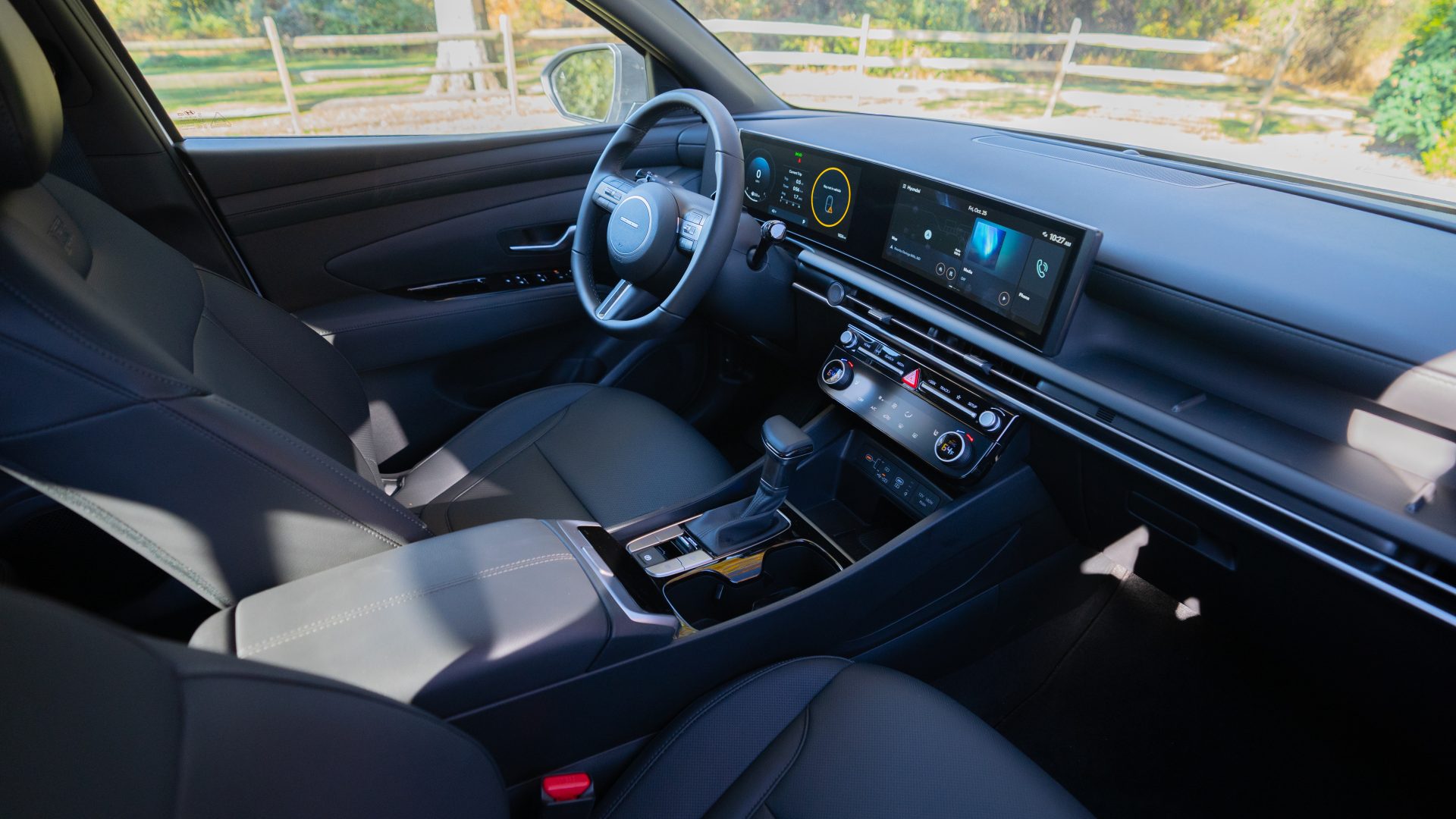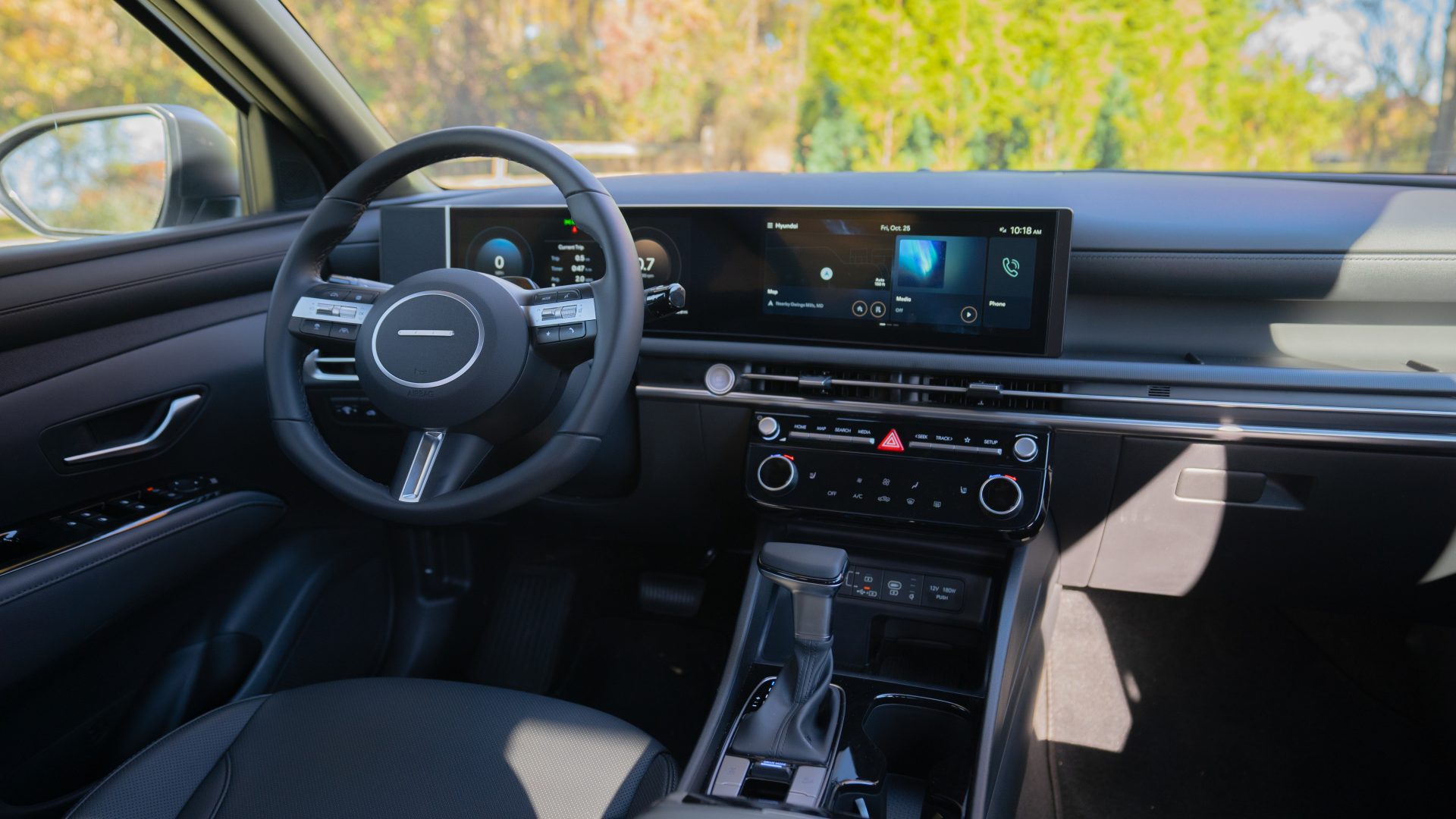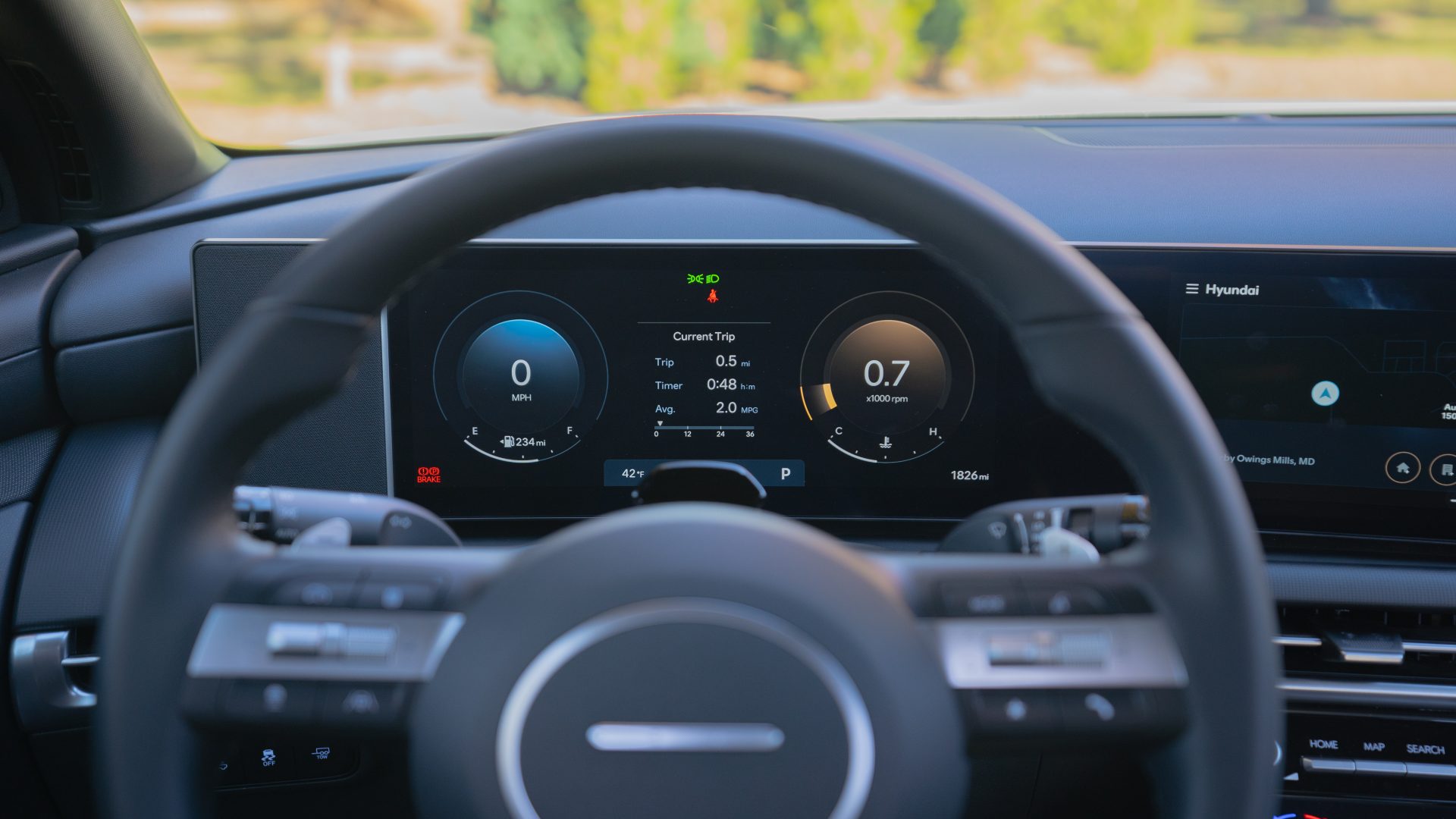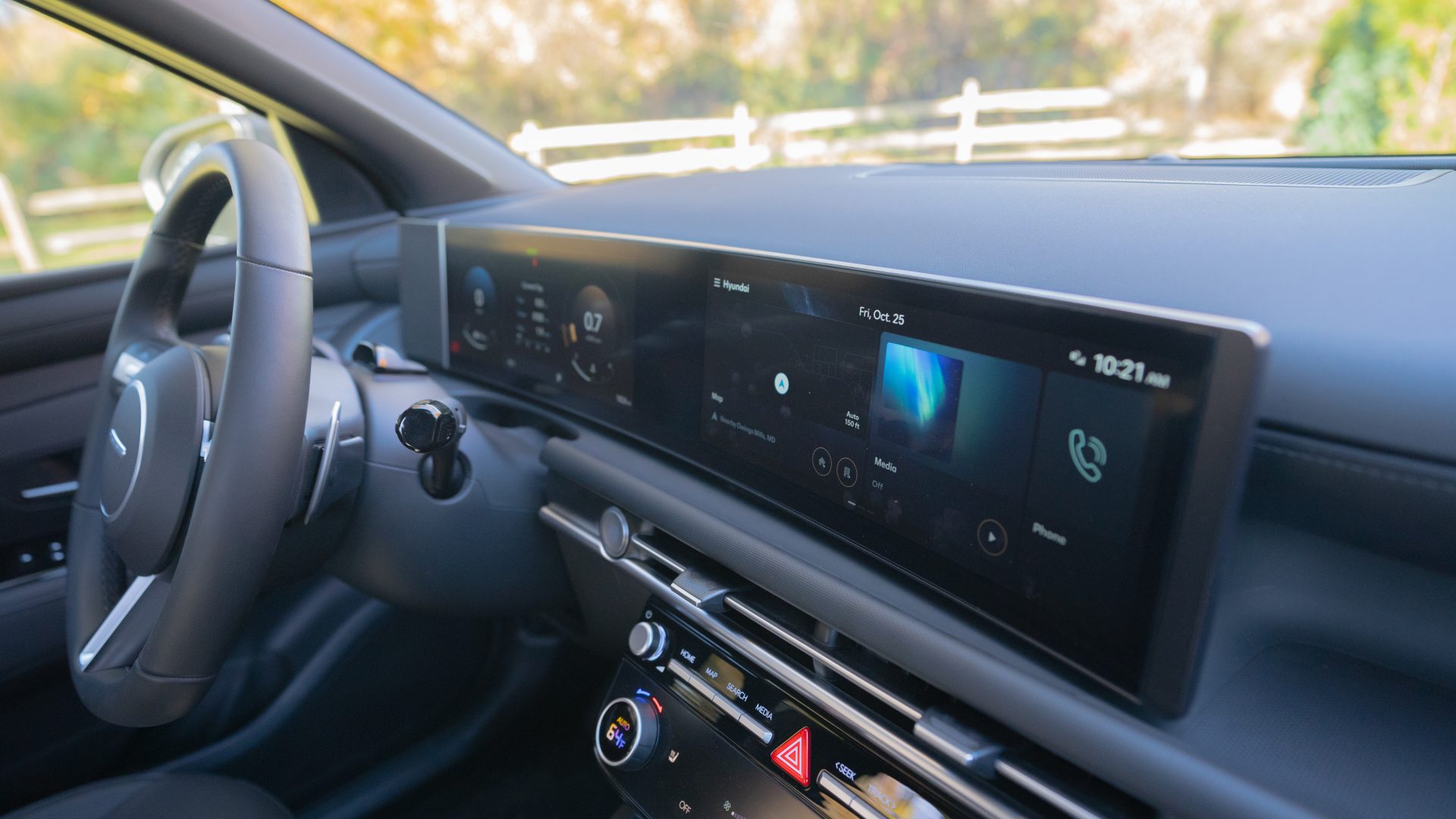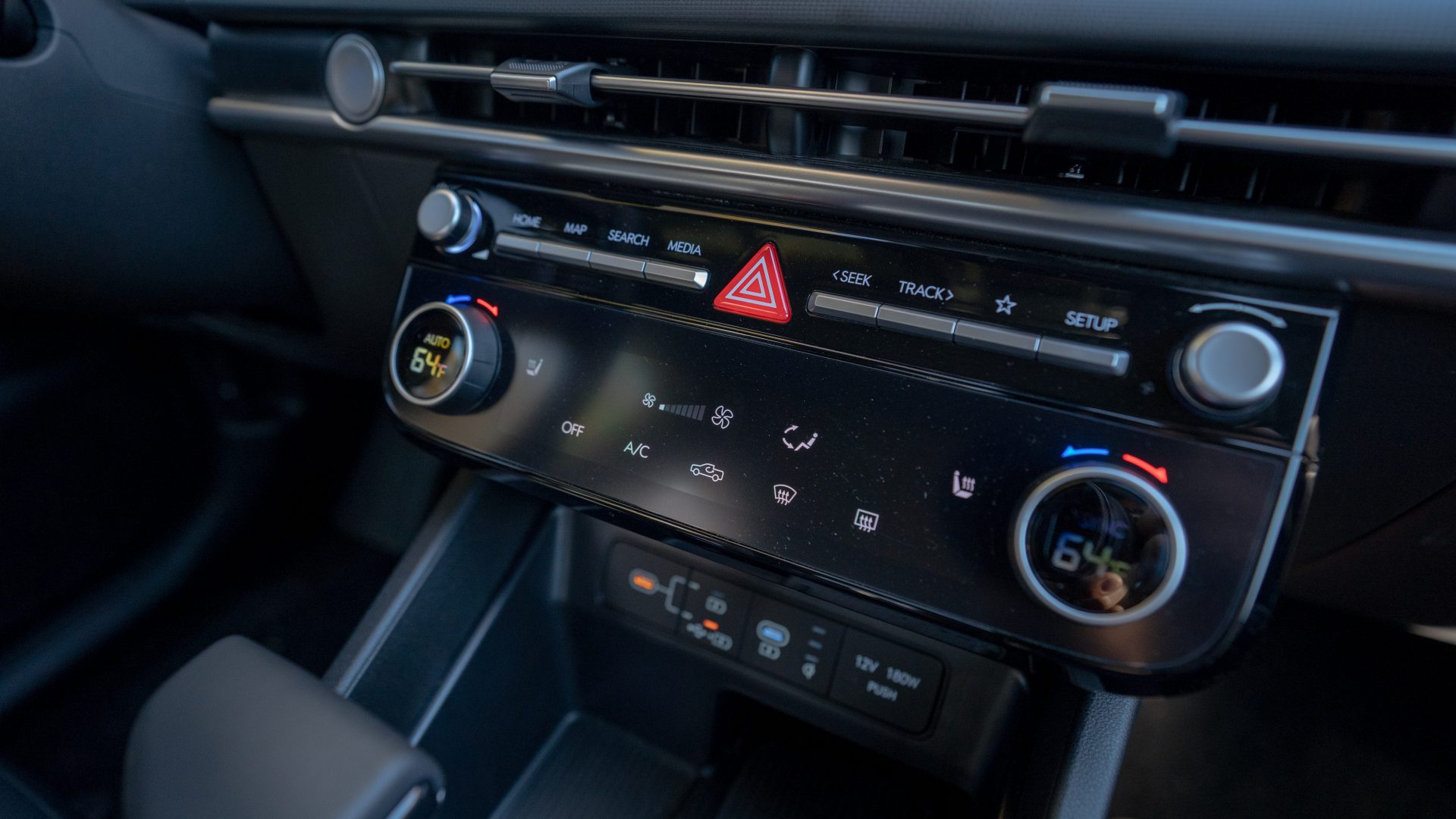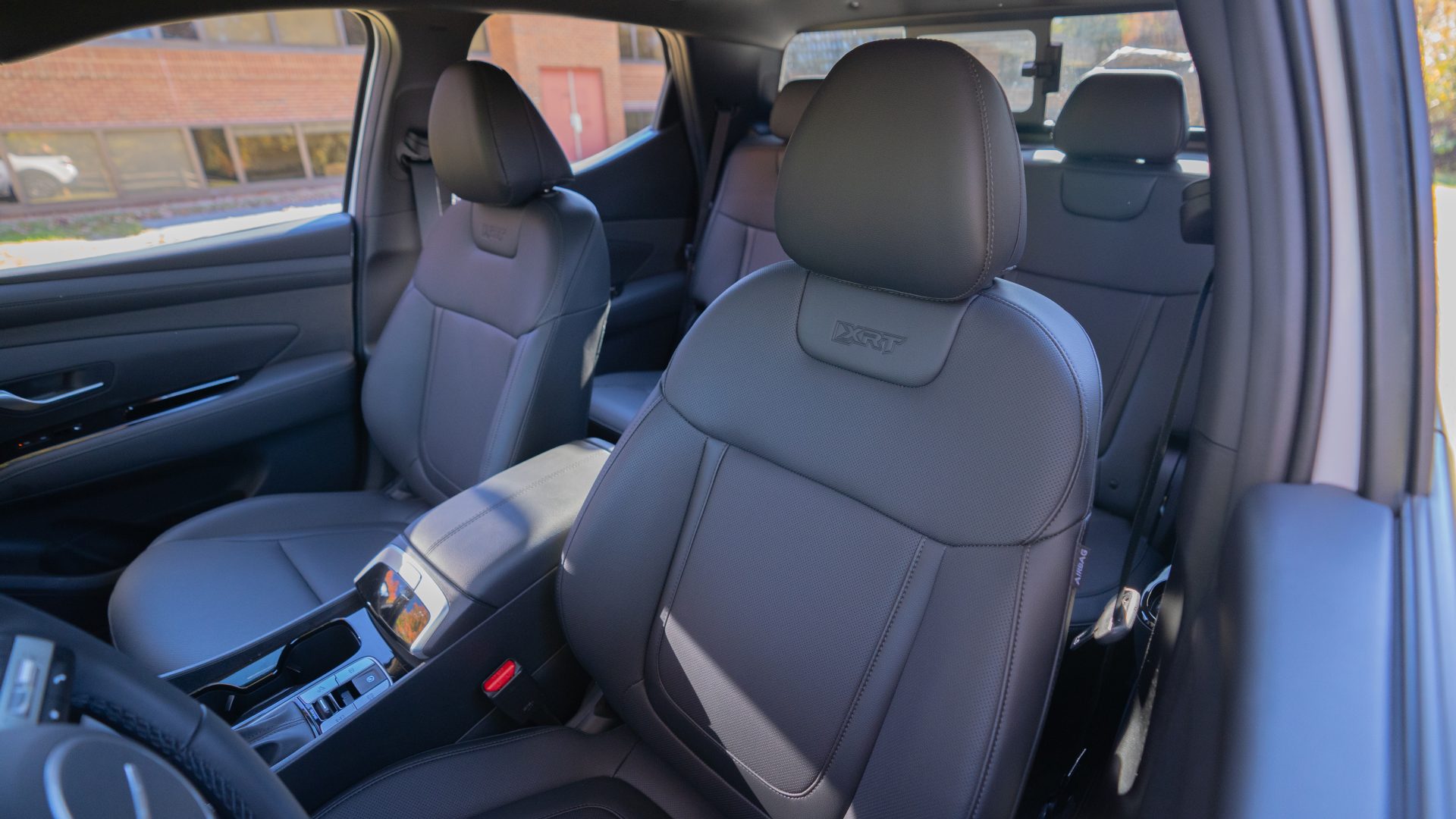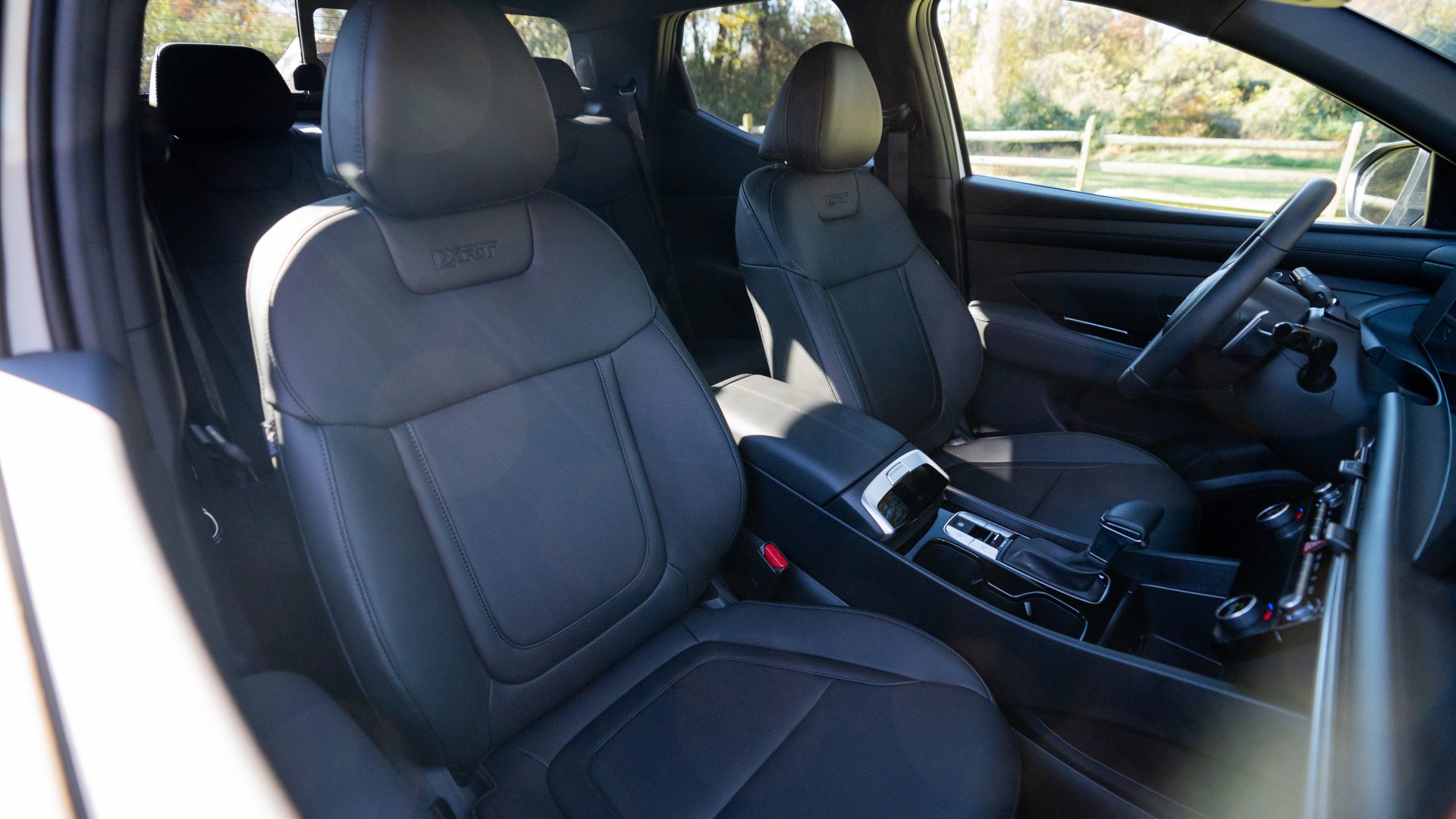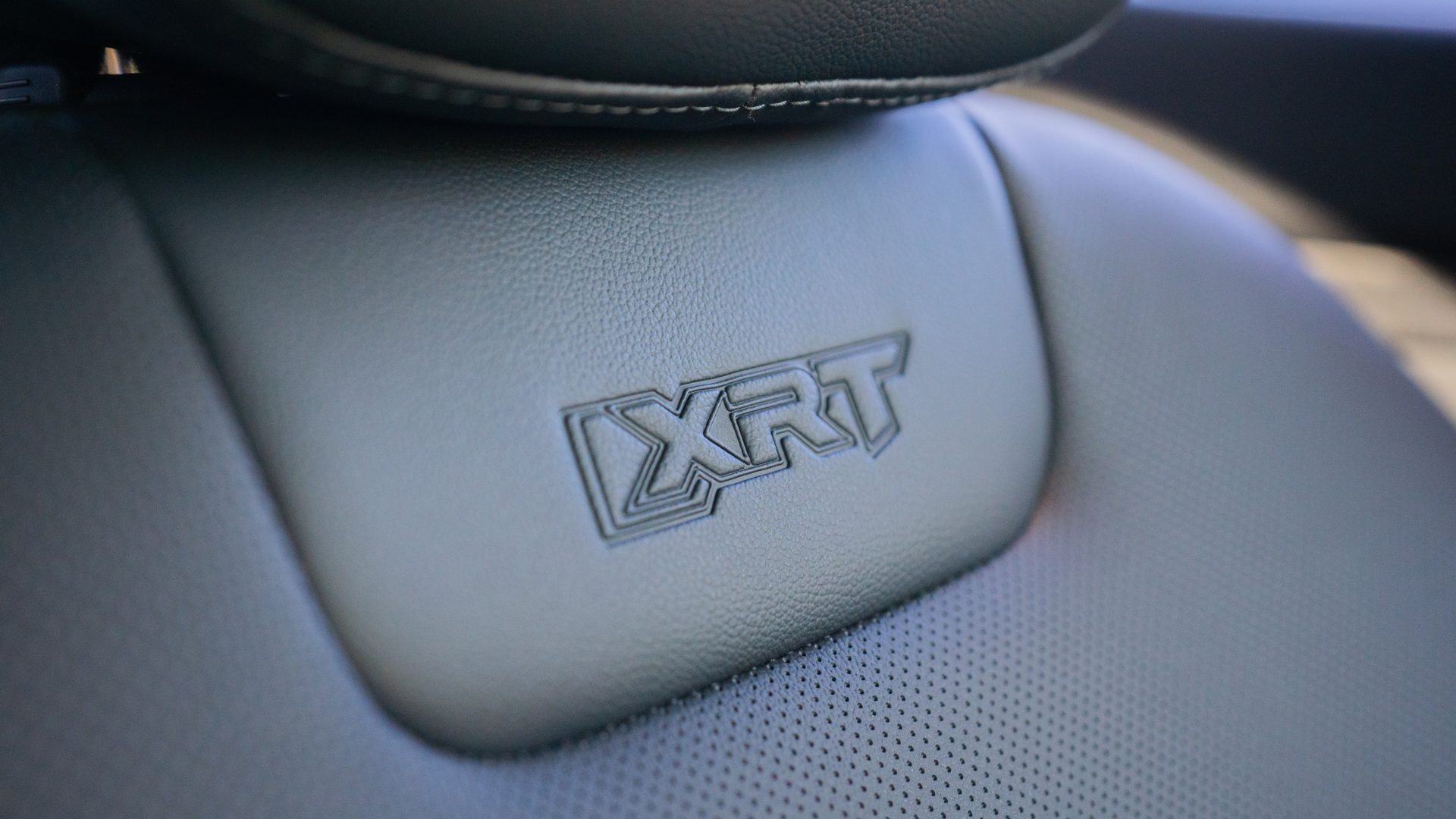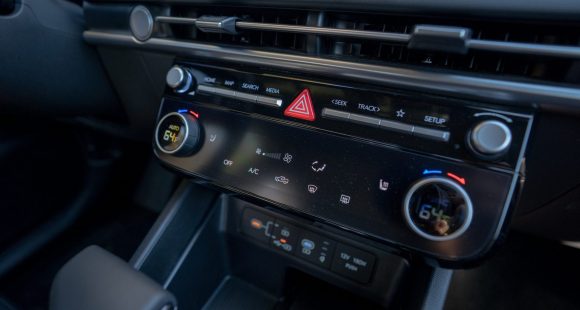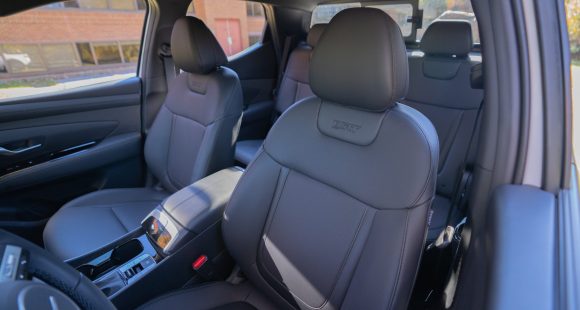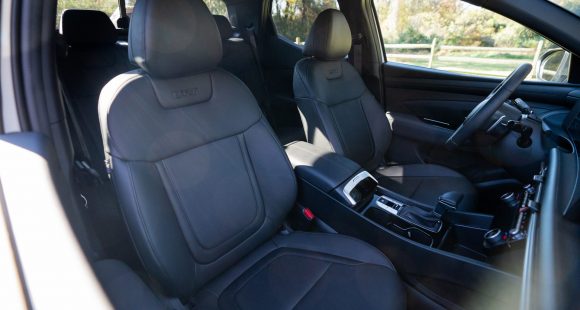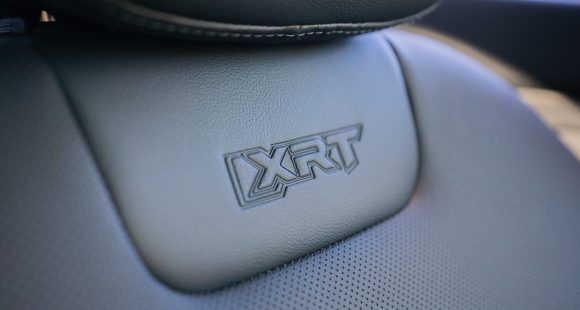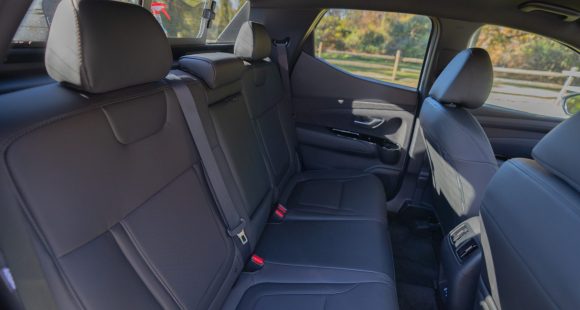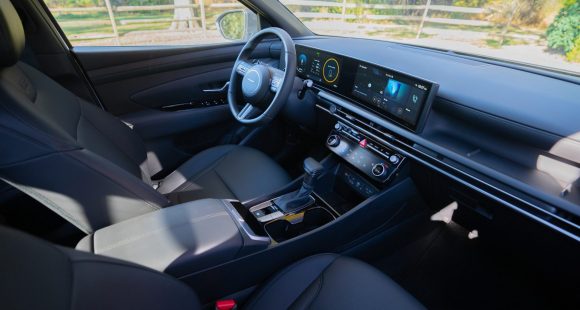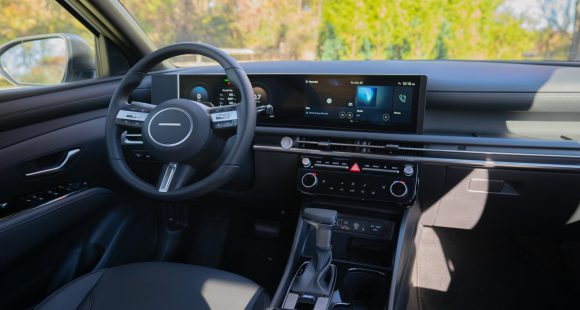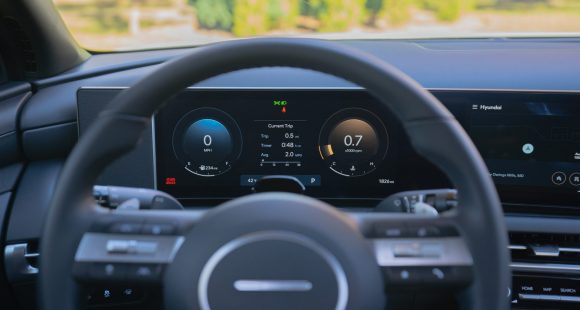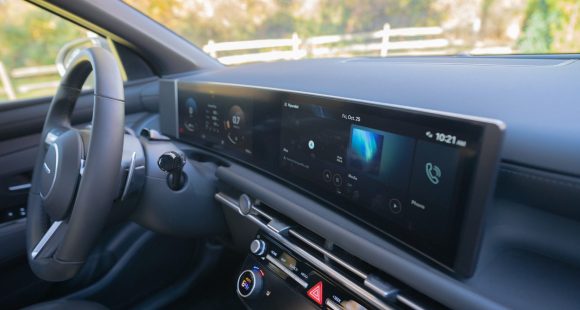2015 Volkswagen Golf R
The MotorWeek Drivers’ Choice Award for best small car for 2015 was awarded to the new Volkswagen Golf family. Primarily because with the TSI, TDI, GTI, SportWagen, and even an e-Golf, they cover all of the bases like no other small car series. Well, it turns out they’re not done yet, as they’ve now unleashed Wolfsburg’s latest pocket rocket on the US, the Golf R.
Regular viewers of MotorWeek are no doubt a little weary of our incessant praise of the new Volkswagen Golf and GTI. If that’s the case, you might want to change the channel for about the next 5-minutes, as we’re about to go all “fan-boy” once again about this 2015 Volkswagen Golf R.
All-wheel-drive is part of the Golf R’s platform of course, a Haldex system that stays front-biased, but can send up to 50% of corner carving grip to the back tires. But, that extra hardware does push weight to a hefty 3,340-lbs.
 Under hood, is a familiar VW and Audi mechanical; a 2.0-liter I4 turbo. And while that’s not a lot of motor in size, it cranks out a sizable 292-horsepower. Plus, a seemingly continuous delivery of 280 lb-ft. of torque throughout the rev band, makes it feel like even more.
Under hood, is a familiar VW and Audi mechanical; a 2.0-liter I4 turbo. And while that’s not a lot of motor in size, it cranks out a sizable 292-horsepower. Plus, a seemingly continuous delivery of 280 lb-ft. of torque throughout the rev band, makes it feel like even more.
This time around, just the DSG automatic transmission is available at launch, and a 6-speed manual won’t arrive until next year. But as you may already know, we’re very fond of the DSG. Driving Mode Selection gets a new Race mode, and you can further upgrade to optional Dynamic Chassis Control that lets you dial in an ultra-stiff ride, should you so choose.
Regardless, the Golf R is an absolute blast to drive. And really, it doesn’t feel much different than the GTI that we love so much until you go heavy on the throttle and let it spin up to glory.
The interior finish is great! This car looks and feel like it’s worth every penny you spend on it; think more Audi than base VW.
There’s plenty of room, a simple and effective layout, with logically placed controls. The upgraded sport seats are awesome at holding you tight, but comfortably so; in a Teutonic snuggle sort of way.
The GTI is certainly no slouch when it comes to the handling department, but here on the Shenandoah Circuit at Summit Point Motorsports Park near Charlestown, West Virginia, the Golf R hunkers down and scoots through corners even better than your wildest expectations.
 Despite a soft overall feel, there’s plenty of grip to be had; as no matter how much throttle you’re carrying, this chassis, can put power in its place, and of course that’s on the pavement.
Despite a soft overall feel, there’s plenty of grip to be had; as no matter how much throttle you’re carrying, this chassis, can put power in its place, and of course that’s on the pavement.
ESC can now be fully turned off, but Sport Mode is absolutely great, letting you have quite a bit of fun, before the electronics step in to keep you pointed where you should be.
As for complaints, this course’s tighter turns and many shifting opportunities had us wishing for bigger shift paddles, as with all of the constant shuffling they were sometimes hard to find.
But of course in a straight line, leaving the DSG in full auto is really where it’s at. Mash the gas, hold on, and 4.9-seconds later, we’re at 60 miles-per-hour.
The Golf R launches off the line smartly with its all-wheel-drive grip, with a snappy and raspy exhaust note all the way down the track for a quick quarter at 13.7–seconds at 103 miles-per-hour. While a short 115-feet is all it took to stop from 60 miles-per-hour.
On the street, the Golf R is even more impressive. It feels very substantial for its size, with a dialed-in solidity like no other small car. It’s agile and wanting to be thrown around, and is the very definition of confidence inspiring.
 Government Fuel Economy Ratings are 23-City, 30-Highway, and 26–Combined; we averaged a very good 28.3 miles-per-gallon of Premium. The Energy Impact Score is 12.7-barrels of oil used and 5.7 tons of CO2 emitted yearly.
Government Fuel Economy Ratings are 23-City, 30-Highway, and 26–Combined; we averaged a very good 28.3 miles-per-gallon of Premium. The Energy Impact Score is 12.7-barrels of oil used and 5.7 tons of CO2 emitted yearly.
Alas, perfection never comes cheap. In this case it starts at $37,415, and is available in 4-door only. Those numbers may scare away a few, but in this world, it’s the unafraid that are truly rewarded.
So, don’t think of the 2015 Volkswagen Golf R as just a sportier GTI, think of it as everything you’d ever want a Golf to be and a bit more. And really everything you’d want in a sensible sport-hatch as well. If you’re perfectly happy with your GTI, do yourself a favor and don’t test drive the “R”, so you don’t know what you’re missing.
Specifications
- Engine: 2.0 liter
- Horsepower: 292
- Torque: 280 lb-ft.
- 0-60 mph: 4.9 seconds
- 1/4 mile: 13.7 seconds @ 103 mph
- EPA: 23 mpg city/ 30 mpg highway
- Energy Impact: 12.7 barrels of oil/yr
- CO2 Emissions: 5.7 tons/yr
2025 Hyundai Santa Cruz
Hyundai’s Trucklet Gets A Lot Techier And A Little Truckier
Small trucks are once again a big deal here in the U.S., with more options to choose from than we’ve had since the 1980s heydays, including newcomers like this Hyundai Santa Cruz. And just like the Hyundai Tucson crossover that it’s based on, the Santa Cruz gets some major updates for 2025. So, it looks like it’s time for us to do some more tiny truckin’!
The Hyundai Santa Cruz pickup truck, and the Hyundai Tucson compact utility that it’s based on, get some significant updates for 2025, mostly revolving around style and tech. So, while our focus here is on the Santa Cruz, just know that most of what you see also applies to the Tucson.
The biggest changes happen inside where the Santa Cruz adopts Hyundai’s curved panoramic display that puts the 12.3-inch driver display and 12.3-inch infotainment screen into a single housing that stretches from behind the steering wheel to over the center stack. And while the center stack itself remains relatively minimal, they’ve redone the climate controls and actually added a few more physical buttons and dials back in. There’s also a better-looking steering wheel with a Driver Attention Sensor behind it; and while the Tucson moved its gear selector to the column, the Santa Cruz keeps its beefy old school shifter right there on the console. That, combined with an overall feel that’s not quite as open as the Tucson, goes a long way towards helping this trucklet feel more truck-like.
XRTs have a Surround View Monitor, Blind Spot Monitoring, and some branded logos. Rear seat room is more plentiful than you’d think seeing it from the outside, but you do sit very upright, and the seats themselves are not very comfy.
Exterior changes center around the usual new grille and wheel choices, but the off-road-inspired XRT gets a tiny bit more serious, featuring a unique front fascia with added tow hooks and a tidied-up undercarriage for better approach angles; plus, exclusive 18-inch wheels with all-terrain tires. No changes to the integrated 4-foot bed with all trims getting storage cubbies on the side of the bed as well as underneath the floor. The integrated bed cover comes with XRT and above or is available in SELs as part of an added Activity package which also adds a sliding rear window.
[It] is certainly one of the best riding vehicles around with a bed.
The Santa Cruz is certainly one of the best riding vehicles around with a bed, nothing rough or tumble here. In XRTs, you will hear a little more road noise from the more aggressive tires, but it’s far from being annoying. And the Santa Cruz’s size makes it very easy to whip in and out of parking spaces.
Nothing changes mechanically; that means a standard 191-horsepower, 2.5-liter naturally aspirated I4 engine in SE and SEL. While XRT and Limited get the turbocharged version of that engine with 281 horsepower, 311 lb-ft of torque, plus standard all-wheel drive. AWD is available on SE and SEL for $1,500. The turbo engine gets a unique dual-clutch transmission which gets an added tow mode for ’25, while the non-turbo works with a traditional automatic; both are eight-speeds. Max tow rating is 3,500 lbs. with the standard powertrain and 5,000 lbs. with all-wheel drive.
After towing our crew to Mason Dixon Dragway, the turbocharged Santa Cruz XRT delivered us to 60 in 6.6 seconds, about half a second slower than what we achieved back in ’22 with a Limited. Full power was a little late to arrive, but once it showed up, it was ready to get to work, providing steady power the whole way down the track. Our best quarter-mile time was a 15-flat at 96 mph. At wide open throttle, DCT shifts were smooth with no power loss moving through the gears, but it does still stumble a little at slower speeds around town.
The handling experience with the XRT was also different from Limited, as the off-road tires struggled to get a good grip on the pavement when we pushed hard; leading to oversteer and more roll than we remember. There was great feel and feedback coming from the brakes in our panic braking runs however; also, consistent fade-free stops from 60 in just 105 feet.
Government Fuel Economy Ratings are 19 City, 27 Highway, and 22 Combined; we averaged a good 23.1 mpg of Regular. That’s an average Energy Impact Score; consuming 13.5 barrels of oil annually, with CO2 emissions of 6.7 tons. Starting price is a low $30,100, but things get much more serious for the XRT which starts at $41,600, though that’s still well below the average transaction price for a pickup truck these days.
So, until Subaru brings back the Brat or Baja or something similar, the 2025 Hyundai Santa Cruz will remain as the most car-like “truck” you can buy. For purists, that’s an absolute turn-off, but for a lot of others, it’s exactly what they desire.
Specifications
As Tested
- Engine: 2.5-liter turbo-4
- Transmission: 8-speed DCT
- Horsepower: 281
- Torque: 311 lb-ft
- EPA: 19 City | 27 Highway | 22 Combined
- 0-60 mph: 6.6 seconds
- 1/4 Mile: 15.0 seconds at 96 mph
- Braking, 60-0 (avg.): 105 feet
- MW Fuel Economy: 23.1 mpg








